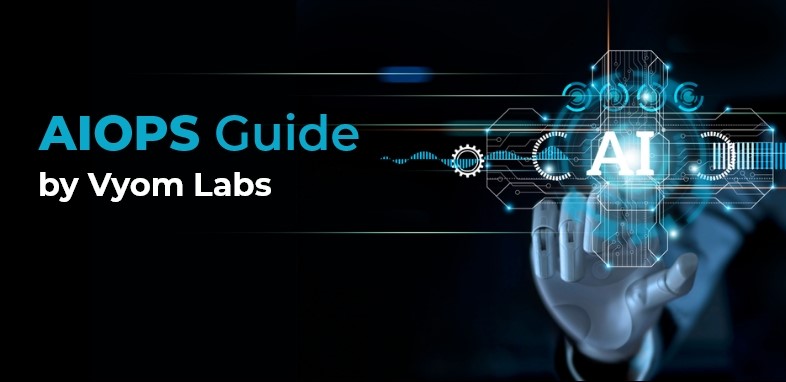Today’s Picture of IT Ops
IT setups and infrastructure is becoming more dynamic to suit evolving business needs. With the rise of adoption of different IT environments like hybrid, complex, and fast-moving paired with containers, microservices, and multi-cloud adaption, monitoring the infrastructure becomes increasingly tedious.
Today’s emerging and evolving technologies create a deluge of operations data that is extremely difficult to track and decipher manually.
As a result of such humongous amounts of data being generated, managing the volume, variety, and velocity of IT Operations. Even more so, getting accurate data and insights has become equally difficult. With event noise, the chances of missing out on SLAs and an increase in MTTR are dramatically high. Because of this many issues go unnoticed till the end user calls to get the problems resolved which ultimately reduces the business value of IT teams. Owing to such cluttered operations, IT Teams simply cannot make time for innovation.
Definition of AIOPS
According to Gartner, the term AIOPS refers to artificial intelligence (AI) being used in IT operations. It utilizes big data computing and machine learning to automate IT operations processes like event correlation, anomaly detection, and causality determination. As technology constantly evolves, so does the definition of ITOps with new tools and tech making their way into daily IT Operations.
The primary objective of AIOps is to bring the best of all the worlds to enhance IT Ops with machine learning, analytics, and other technologies. Individually, all these tools and tech have their advantages, but when put in tandem to work together, to churn through large datasets and produce actionable insights.
Another useful application of AIOps is predicting potential outages and preventing performance issues before it hampers the enterprise operations. That in turn helps in the smooth mitigation and remediation of such incidents.
Let’s look at a few use cases in IT Operations:
Event noise reduction
To monitor and properly manage the complex network of assets, IT teams rely on alerts coming from various tools. Among the flood of alerts and notifications and alerts, critical ones get missed out.
With AI onboard, it is possible to employ machine learning to analyze the historic data to identify patterns and suppress the flood of alerts and identify the critical ones. This means a quicker resolution of critical tickets.
Predictive alerting
Most of the time IT teams focus on resolving the issue after it has taken place. As a result of a lack of preventive measures, the business ends up paying the toll and spends a hefty price for recovery and remediation and sometimes even violation of SLAs due to critical system failures.
AIOPS also makes use of a special ability called predictive alerting which employs analytics for historical and real-time performance metrics. Which in turn helps establish dynamic baselines and identify any abnormalities. As a result, major outages and system failures can be prevented by making IT teams proactive than reactive.
Root cause identification
With so many tools and applications in place, it becomes incredibly arduous to pinpoint the cause of the problem for the IT teams. So correlating the events and performing root cause analysis becomes a costly affair. But with AIOps, the process can be sped up using advanced correlation and log and event analytics. That means AI can go through millions of monitoring data points, metrics, events, and log anomalies to correlate and identify the root cause.
Automated remediation
One of the biggest challenges with the remediation of incidents is the manual aspect of it. This means manually going through the documents and it is possible that not all issues would be documented. As a result, the chances of new issues and incidents arising go up when we leave it to traditional manual strategies.
This is where AIOps comes into the picture. Allowing automation to tackle simple tickets allows your staff to tackle mission-critical tasks. Although automation for the remediation of complex issues is not recommended, it can certainly make your IT teams more efficient. For complex issues, it is still advisable to let the experts do what they do best.
Conclusion
IT infrastructure is only going to grow and with evolving technologies, the complications will also go up. But your IT teams needn’t be worried about downtime or providing business value. With AIOps it is possible to harness cutting-edge tech and all its advantages for faster, more efficient IT Operations.The AIOps Market was valued at USD 13.51 billion in 2020 and is projected to be worth USD 40.91 billion by 2026. Looking at the benefits and costs it is imminent that IT teams will start adopting AIOps technologies and approaches.
About the Author:
 Prashant Deshpande
Prashant Deshpande
Executive Vice President
Prashant heads global delivery of Vyom Labs consisting of various practice units such as BMC and ServiceRize. Prashant has illustrious career over thirty years in information technology and has served at senior executive levels with global companies such as: IBM, BMC, Veritas and Citibank.
Prashant has built, scaled and managed various IT, professional services & product development/support organizations.
His technical expertise is in IT infrastructure management, automation and managed services. He is passionate about business transformation using cognitive technologies such as AI and machine learning.
